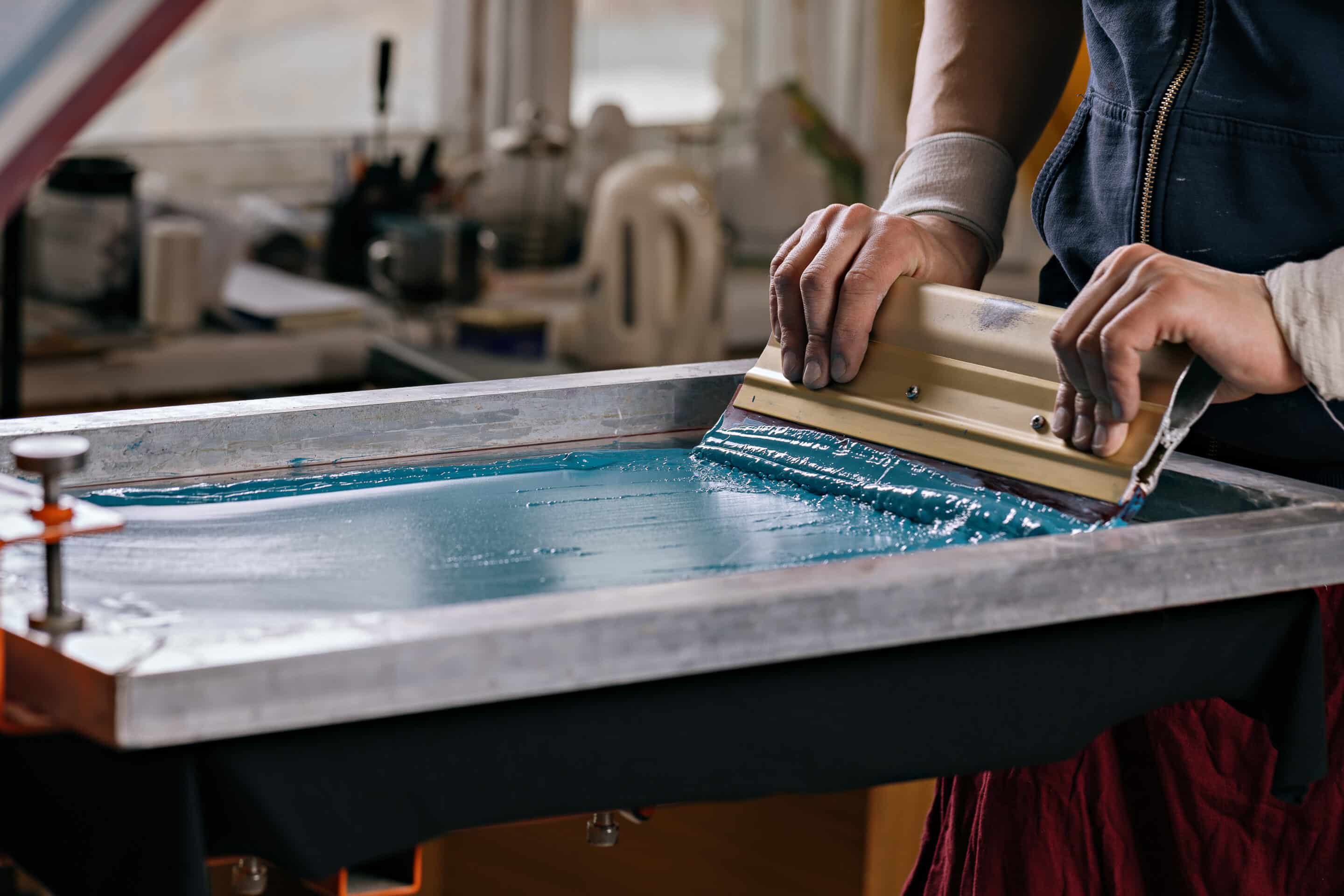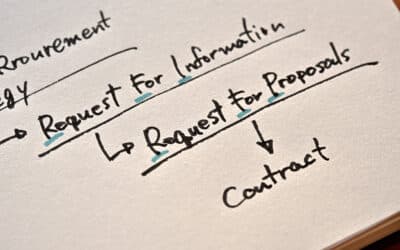When it comes to selecting a print method for your next project, the choice between DTF vs. screen printing can be daunting.
This guide will explore the unique features, advantages, and challenges of each method to help you make an informed choice.
Whether you need custom apparel for an online company store, T-shirts for events, or personalized gifts, understanding these printing techniques is crucial.

Understanding DTF and Screen Printing
Both DTF (Direct to Film) and screen printing are popular techniques that yield high-quality results when printing apparel.
Let’s break down what each method involves, how they work, and their primary differences.
What is DTF Printing?
Direct-to-film printing involves printing your design using a special printer ink, directly onto a transfer film. After printing, it runs through a shaker where a fine-powered adhesive sticks to the back of the ink (the logo is printed in reverse, so the adhesive is on the back of the logo. White ink is printed over the top of the logo, so it can be used on any color garment, similar to screen printing. The adhesive sticks to the white ink, and then it is run through a hot dryer where it cures. When dry, the logos are cut out and can be immediately pressed onto the item or stored for future use.
When it is time to apply the logo, it is positioned on the garment and then heat-pressed. The outcome is a durable and vibrant print. There is no weeding and the logo works on cotton, poly, blends, etc. The number of colors in the logo is unlimited and it doesn’t cost more to print a full-color logo or a one-color logo. This is one of the significant advantages of DTF vs. screen printing.
What is Screen Printing?
Screen printing is a technique that involves pushing ink through a stencil onto the fabric. It is the most common method to print T-shirts, hoodies and other casual apparel. Every color requires a separate screen, which is filled with the correct color of ink. There are a couple of techniques to screen print shirts.
Manual printing: This is used for small runs with just a few colors. The operator drops the screen onto the shirt and manually pushes the ink through the screen and onto the shirt by dragging a squeegee across the screen. They do this for every color in the shirt. It takes an experienced person to be efficient in this type of printing.
Automatic Printing: The same screens and ink are used, however, the automatic machines pull the squeegee across the screen and the shirts rotate around a carousel and will print multiple colors. When they make the full loop around the machine, they are done and the operator removes the shirts from the platen and puts it in the dryer to cure. For large runs, this is the most cost effective way to print T-shirts. This is the big advantage of screen printing.
Comparing DTF and Screen Printing
To choose between DTF and screen printing, consider the following factors:
Setup and Running Costs
Screen printing involves higher initial costs due to screen creation and labor. However, it becomes cost-effective for large orders, especially ones with one or two colors. DTF printing has lower setup costs, making it suitable for small batches, intricate designs, or multiple-color designs. For companies running uniform programs, DTF can be advantageous because DTF logos can be on the shelf and applied on-demand as orders come in. That doesn’t work for screen print.
Design Complexity and Colors
DTF printing excels at producing detailed, multicolored designs. Logos are printed using a very high-end digital printer, so fades, and multiple colors work great. Screen printing is suitable for simpler designs with fewer colors, as each color needs a separate screen. For large runs, it can make sense to set up complex logos with screen print, however, DTF can reproduce photographs beautifully.
Versatility
DTF can print on various materials, including dark and textured fabrics. You can also print on pockets of bags and other areas, as long as you can fit it into a heat press. Screen printing is most effective on smooth surfaces and requires special inks for different materials. This versatility makes DTF a great option for on-demand production needs. Designs can be used on multiple different items.
Turnaround Time
DTF offers a quicker turnaround for small to medium-sized orders due to its ability to print all colors simultaneously. Screen printing takes longer because you need to separate the art, then burn a screen for each color in the design, then mix ink, register the design and start printing.
Durability
Both methods produce durable prints. Screen printing is especially durable when ink is directly applied to the fabric. With proper care, DTF prints also last a long time. We have tested DTF and believe that it wears as well as screen print ink. Please note that DTF is a new technology and there are numerous vendors fighting to be the leader in DTF. Not all transfers are created equally. Screen print has been around for decades and ink has been vetted and the quality is stable.
Feel
Screen Print – Most people know what to expect when touching a screen print logo. It has a slightly plastic feel, but after it has been washed several times, it softens up. The more colors and more intricate the design, the thicker the logo will be, especially on a dark shirt. All logos require a white under base, so at times, you can have several layers of ink built up on a shirt.
DTF – The logos are smoother feeling than a screen print. When the logo has the shirt showing through or isn’t a solid block of print, it feels great. If a shirt has a solid logo, it will feel a bit plasticky. It has a different feel than screen print, but it is soft and smooth. Our team likes the feel better than the thick screen print, but this is a personal preference.
Sustainability
90%+ of promotional screen printing is done using Plastisol ink, which is plastic. There is water-based ink, but that is used more in retail where the orders are much larger. It is more difficult to set up, but has a very soft feel and is more sustainable than plastisol ink. It also uses less solvents to clean the screens.
Most DTF ink is water-based, so it is more eco-friendly. The other big benefit vs screen print is there are no screens to clean and no wasted ink, so it is about as sustainable as the printer hooked to your computer. The transfer paper does get discarded after the logo has been transferred to the garment.
Cost
Screen printing larger quantities is faster and less expensive per print, so when it makes sense, we move jobs to screen print. If you compared an order for 144 shirts with a full back 2-color logo, screen printing is going to be less expensive, however, if the logo has 5 colors, DTF would be less expensive. Don’t worry, we will determine the best option based on each job.
Making the Right Choice for Your Needs
The best printing technique depends on your specific needs:
- Complex, Multi-Color Designs: DTF is ideal for detailed and colorful prints in small quantities.
- Simple, High-Volume Orders: Screen printing is perfect for large runs of simple designs.
iCoStore offers both DTF and screen print options. Based on the job, logo, and material, we will select the best option. The logos look so similar when printed, we can use both with the same customer, depending on the job.
For our repeat, small orders that are placed through our online company stores, we use DTF logos, which allow us to quickly produce multiple orders on different materials with no setup time.
Whether you need online company stores, uniform programs, or on-demand production, we have the technology and in-house decoration expertise to meet your needs. We are happy to show you samples and discuss both DTF and screen print.
Explore our online company apparel store for on-demand company stores and create a successful swag store with iCoStore.
For further assistance, reach out to us. We’re here to help you make the best choice for your printing projects.
Frequently Asked Questions About DTF vs. Screen Prints
- Can I use DTF or screen printing on all fabric types?
DTF printing is highly versatile and works well on both light and dark fabrics, including cotton, polyester, and blends. Screen printing is also versatile and works on most materials. The advantage that DTF has is getting a logo onto an item with zippers or seams. As long as you can get a heat press into the bag, it will print well.
- Is direct-to-film more environmentally friendly than screen printing?
DTF printing uses water-based inks and requires no physical screens or harsh chemical cleaners, making it a more environmentally friendly option. Screen printing involves chemicals and solvents, especially during screen preparation and cleanup, which can be less eco-friendly.
- Is DTF safer for children’s clothing than screen printing?
Both DTF and screen printing can be safe for children’s clothing if the inks used are non-toxic and properly cured. It is recommended to use inks compliant with safety standards like OEKO-TEX or CPSIA when printing for children.



